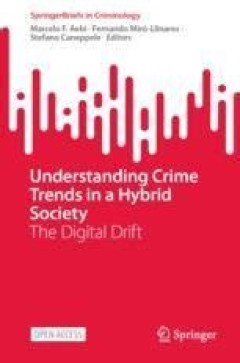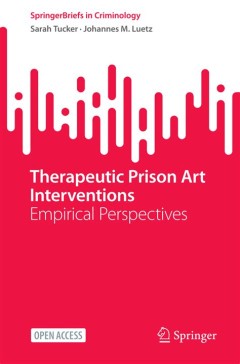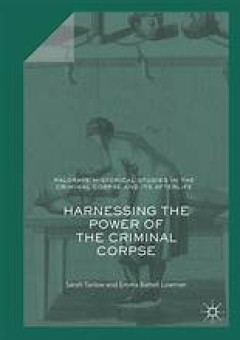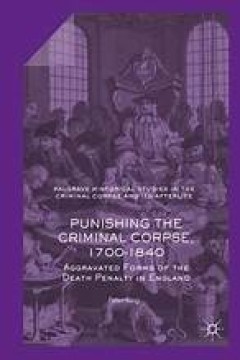Filter by

A Comparative Analysis of Pre-Trial Procedure in Europe: The Search for an Id…
The hearing of a case in a court room by a tribunal, today classified as the trial phase, has long stood inherently in the nature of the judicial competence of a State. By contrast, the pretrial phase and the introduction of the public prosecutor into the criminal procedural system as a subject of the judicial process has a much shorter history than the trial. However, in recent times, the pre-…
- Edition
- -
- ISBN/ISSN
- 978-605-07-0747-2
- Collation
- 233 hlm
- Series Title
- -
- Call Number
- -

Voicing Consent = Sex Workers, Sexual Violation and Legal Consciousness in Cr…
This open access book draws on an international research project, using extensive and multiple methods to explore unwanted sexual contact and violence in sex work populations. A project delivered by a large team of sex workers, peer researchers, and academics, and with practitioner input over a four-year period, the central question they explore is: how do social, legal, and judicial contexts s…
- Edition
- -
- ISBN/ISSN
- 9783031777158
- Collation
- XX, 270hlm; ill., lamp.,
- Series Title
- -
- Call Number
- -

Understanding Crime Trends in a Hybrid Society = The Digital Drift
This open access book critically revisits 30 years of debate surrounding the evolution of crime trends, aiming to reconcile various hypotheses and controversies. It scrutinizes the concept of the "crime drop," highlighting the methodological pitfalls in understanding the causation mechanisms behind this phenomenon. By examining the impact of information and communication technologies (ICT) on d…
- Edition
- -
- ISBN/ISSN
- 9783031723872
- Collation
- XV, 131 hlm; ill., lamp.,
- Series Title
- -
- Call Number
- -

Therapeutic Prison Art Interventions = Empirical Perspectives
This book is an Open Access book. This book discusses engaging prisoners in therapeutic art. It has been prepared for an academic and professional readership and has policy implications for prison governance worldwide. Following years of piloting research, the book presents a prototype for sensitively attuned art therapy delivery that promises new pathways for prisoner rehabilitation. The book …
- Edition
- -
- ISBN/ISSN
- 9783031859915
- Collation
- XLIV, 151 hlm,: ill, lamp; 21 cm
- Series Title
- -
- Call Number
- -

UN Security Council Referrals to the International Criminal Court : Legal Nat…
This book offers a unique critical analysis of the legal nature, effects and limits of UN Security Council referrals to the International Criminal Court (ICC). Alexandre Skander Galand provides, for the first time, a full picture of two competing understandings of the nature of the Security Council referrals to the ICC, and their respective normative interplay with legal barriers to the exercis…
- Edition
- -
- ISBN/ISSN
- 9789004342217
- Collation
- 280 hlm; ill., lamp.,
- Series Title
- -
- Call Number
- -

Everyday Crime, Criminal Justice and Gender in Early Modern Bologna
Female protagonists are commonly overlooked in the history of crime; especially in early modern Italy, where women’s scope of action is often portrayed as heavily restricted. This book redresses the notion of Italian women’s passivity, arguing that women’s crimes were far too common to be viewed as an anomaly. Based on over two thousand criminal complaints and investigation dossiers, Sann…
- Edition
- -
- ISBN/ISSN
- 978-90-04-44059-3
- Collation
- oer.unej.ac.id
- Series Title
- Crime and City in History, Volume: 5
- Call Number
- -

Harnessing the Power of the Criminal Corpse
This open access book is the culmination of many years of research on what happened to the bodies of executed criminals in the past. Focusing on the eighteenth and nineteenth centuries, it looks at the consequences of the 1752 Murder Act. These criminal bodies had a crucial role in the history of medicine, and the history of crime, and great symbolic resonance in literature and popular culture.…
- Edition
- 1
- ISBN/ISSN
- 978-3-319-77908-9
- Collation
- oer.unej.ac.id
- Series Title
- Palgrave Historical Studies in the Criminal Corpse and its Afterlife
- Call Number
- -

Capital Punishment and the Criminal Corpse in Scotland, 1740–1834
This book is open access under a CC BY 4.0 license. This book provides the most in-depth study of capital punishment in Scotland between the mid-eighteenth and early nineteenth century to date. Based upon an extensive gathering and analysis of previously untapped resources, it takes the reader on a journey from the courtrooms of Scotland to the theatre of the gallows. It introduces them …
- Edition
- 1
- ISBN/ISSN
- 978-3-319-62018-3
- Collation
- oer.unej.ac.id
- Series Title
- Palgrave Historical Studies in the Criminal Corpse and its Afterlife
- Call Number
- -

Dissecting the Criminal Corpse Staging Post-Execution Punishment in Early Mo…
Those convicted of homicide were hanged on the public gallows before being dissected under the Murder Act in Georgian England. Yet, from 1752, whether criminals actually died on the hanging tree or in the dissection room remained a medical mystery in early modern society. Dissecting the Criminal Corpse takes issue with the historical cliché of corpses dangling from the hangman’s rope in crim…
- Edition
- 1
- ISBN/ISSN
- 978-1-137-58249-2
- Collation
- oer.unej.ac.id
- Series Title
- Palgrave Historical Studies in the Criminal Corpse and its Afterlife
- Call Number
- -

Punishing the Criminal Corpse, 1700-1840
This book is open access under a CC BY 4.0 licence. This book analyses the different types of post-execution punishments and other aggravated execution practices, the reasons why they were advocated, and the decision, enshrined in the Murder Act of 1752, to make two post-execution punishments, dissection and gibbeting, an integral part of sentences for murder. It traces the origins of t…
- Edition
- 1
- ISBN/ISSN
- 978-1-137-51361-8
- Collation
- oer.unej.ac.id
- Series Title
- Palgrave Historical Studies in the Criminal Corpse and its Afterlife
- Call Number
- -
 Computer Science, Information & General Works
Computer Science, Information & General Works  Philosophy & Psychology
Philosophy & Psychology  Religion
Religion  Social Sciences
Social Sciences  Language
Language  Pure Science
Pure Science  Applied Sciences
Applied Sciences  Art & Recreation
Art & Recreation  Literature
Literature  History & Geography
History & Geography